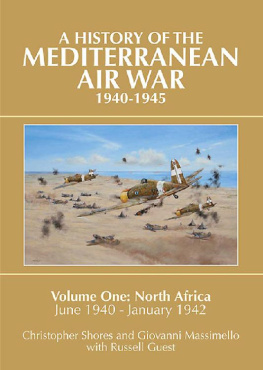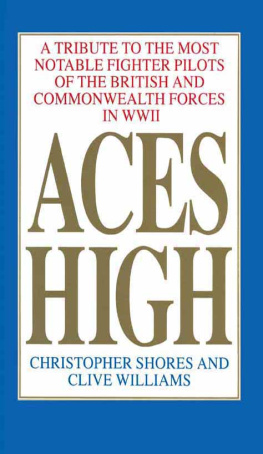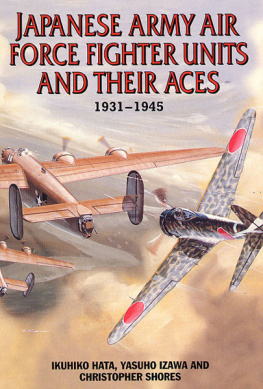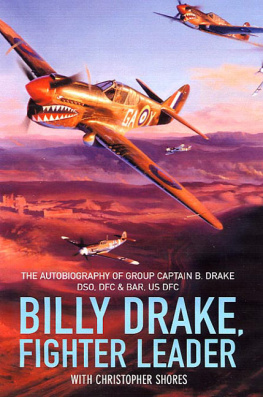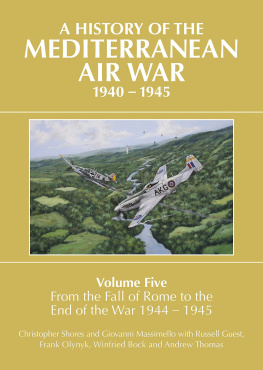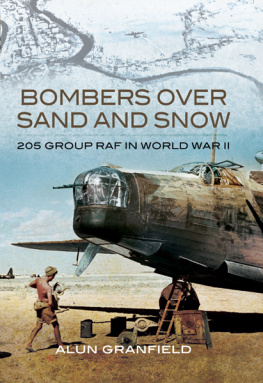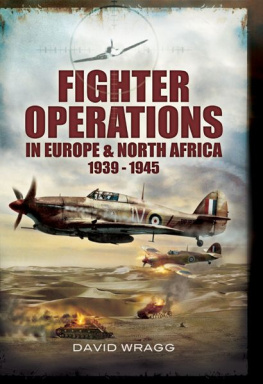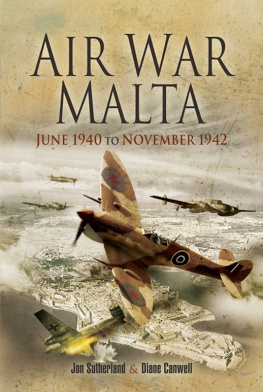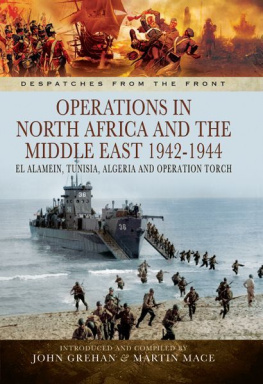Shores, Christopher F.
Mediterranean air war, 1940-1945.
Volume 1, North Africa, June 1940-January 1942.
1. World War, 1939-1945 Campaigns Africa, North.
2. World War, 1939-1945 Aerial operations.
I. Title
940.5'4231-dc22
All rights reserved. No part of this publication my be reproduced, stored in a retrieval system, or transmitted in any form or by any means electronic, mechanical, photocopying, recording or otherwise, without prior permission of the copyright owner.
INTRODUCTION
It is well over 40 years since Hans Ring and I worked on and produced Fighters over the Desert. This was followed six years later by Fighters over Tunisia. Both books have been out of print for many, many years, and I have been pressed frequently to allow them to be reprinted. This I have studiously avoided, since in the meantime it has become ever-more apparent to me that there was much more information that I would wish to include, or to use to rectify mistakes and misunderstandings in the original volumes. Particularly, while in those far-off days I had privileged access to records before these were released to the Public Records Office (now the National Archives), this was only at squadron level. The ability to research the documents of wings, groups, and command levels has made a considerable difference to my understanding of events.
After long thought and discussion, I have begun a major project. This involves, firstly, the re-writing of the Western Desert and Tunisian campaigns in such number of volumes as proves to be appropriate, but to include not just the fighters, but also the bombers, reconnaissance and transport aircraft, and their supporting units.
It will then be my intention, all things being equal, to continue the series with coverage of the Sicilian, Italian and Aegean campaigns, and the related Strategic Bombing Offensive launched by the US 15th Air Force and RAF 205 Group. The intention is, together with the other campaign histories in which I have been involved, ultimately to produce a full history of the whole Mediterranean area conflict between 1940-45.
In respect of the opening volumes relating to the Western Desert and Tunisia, these are designed essentially to form part of a series including Malta: The Hurricane Years, 1940-41, Air War for Yugoslavia, Greece and Crete, 1940-41, Malta: The Spitfire Year, 1942 and Dust Clouds in the Middle East. Frequent cross-reference is being made to all areas where these earlier volumes impinge or relate to the subject matter of the current books.
It is also intended that, where appropriate, similar inter-relation may be achieved with volumes covering other campaigns, including Fledgling Eagles, Bloody Shambles, Volumes 1 and 2, Air War for Burma and 2nd Tactical Air Force, Volumes 1-4. Indices included with each book will allow the progress of many individual pilots and units between these various theatres of operations. Those interested in following in more detail many of the pilots appearing in these volumes will be able to obtain further such information in Aces High, Volumes 1 and 2, and Those Other Eagles.
Readers of this volume will discover that I have employed first hand accounts on frequent occasions from the memoirs both of commanders and airmen. I have done so deliberately as I feel that these often encapsulate the attitudes and the knowledge prevailing at the time with a freshness and immediacy which latter-day reporting cannot always produce. I intend to continue to do this in the planned further volumes.
It will also become obvious that I have made considerable such inclusions where reference is made by those present (particularly at command level) to the inadequacies of the British Army at the time. I have done this because I believe that it has subsequently become accepted that the North African campaigns became mainly a battle for airfields, and that air power was increasingly the dominating and decisive factor. Indeed, the view of most of these commanders was that the Allied air force frequently saved the army from disaster. However, when one reads most of the accounts and memoirs of these battles from the army viewpoint, one is left with the impression that the air force hardly existed and played little part in the proceedings. My wish is to seek to remedy this perception.
Which brings me neatly to the coverage I have given to the land operations themselves. Far from being anti-army, I must begin by admitting that after military aviation, my other great passion is for tanks and other armoured fighting vehicles. Indeed, the temptation has been for me to write far more about these matters than space permits. I have therefore sought to limit the inclusion of such details to those which will allow the reader to try and understand just how the activities in the air related to what was happening on the ground below.
In the case of the Crusader operations which account for a considerable part of this volume, the battle was long, hard and complex. There have been numerous accounts of the fighting between mid November 1941 and the end of January 1942. I have sought to read them all, and they are included in the bibliography at the end of this book. In my opinion the best of the lot is Richard Humbles Crusader; The Eighth Armys Forgotten Victory, and I warmly recommend this book to those readers wishing to gain fuller knowledge and a wider understanding of this critical period of the war. Mr Humbles book is also considerably fairer to the involvement of the air forces than most!
When Hans Ring and I originally researched the Desert operations we found ourselves frequently baffled when we could not always find losses to relate to the claims of the fighter pilots involved. Many years of study of many air forces and campaigns have led me to understand just how prevalent over-claiming was in many circumstances, and to allow for this. To a greater or lesser extent, this is a phenomenon which is endemic in aerial combat.
I have in places been critical of the equipment provided to the Commonwealth air forces, and of the paucity of training being provided to those entering action for the first time from the beginning of 1941 onwards (and indeed such criticisms frequently apply just as much to the ground forces). That so much would be achieved by the end of 1942 with such undistinguished aircraft must surely result from truly heroic efforts.
I have found it necessary at times to indicate the sometimes malign influence of the British prime minister, Winston Churchill, in constantly pressing the commanders in the field to proceed before their forces were ready. Although often understandable in the circumstances prevailing, it did lead to the cruel and sometimes unfair damage to the careers of a number of gifted commanders whose main fault had been to try and bring home to the high command that which they did not wish to hear. I stress, however, that in referring to these matters I am straying into the areas of hindsight, and perhaps with a clearer knowledge of tactics and methods much better understood at a later date than was possible at the time. All too often it was a question not of what should have been done, but just what could be done, given the knowledge and resources available then. The reader should keep this in mind throughout.

